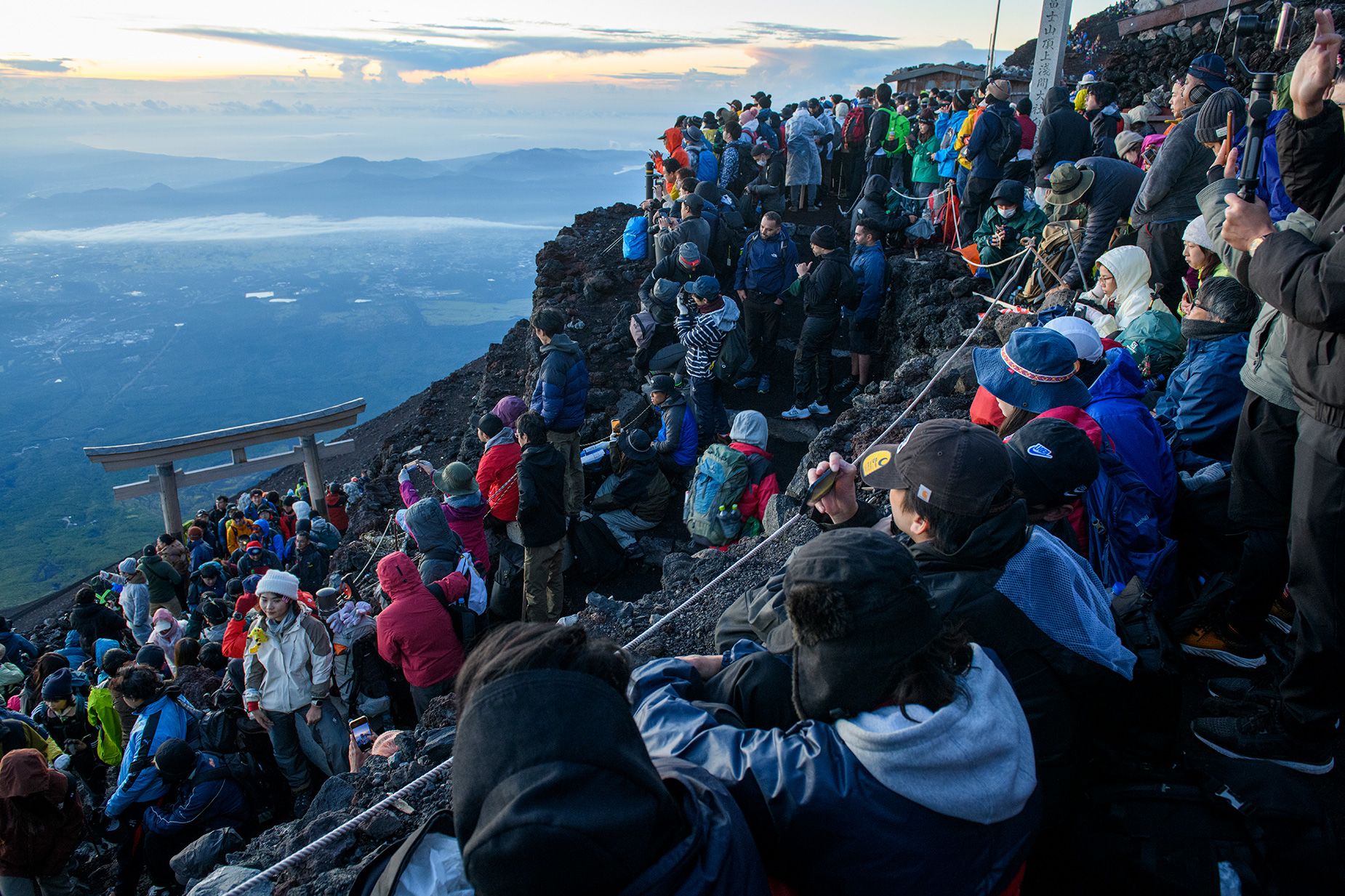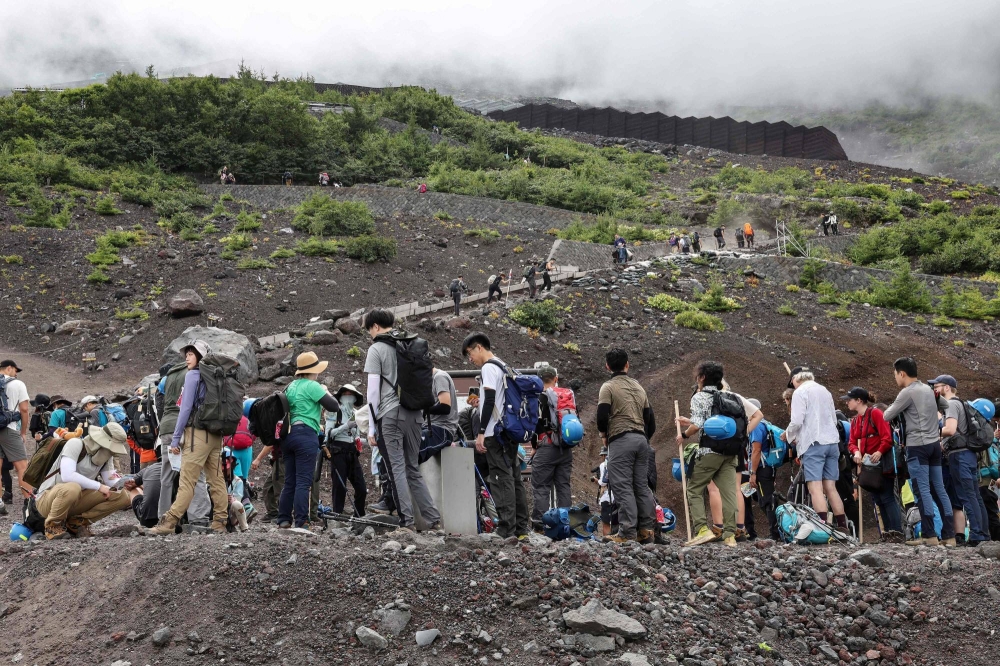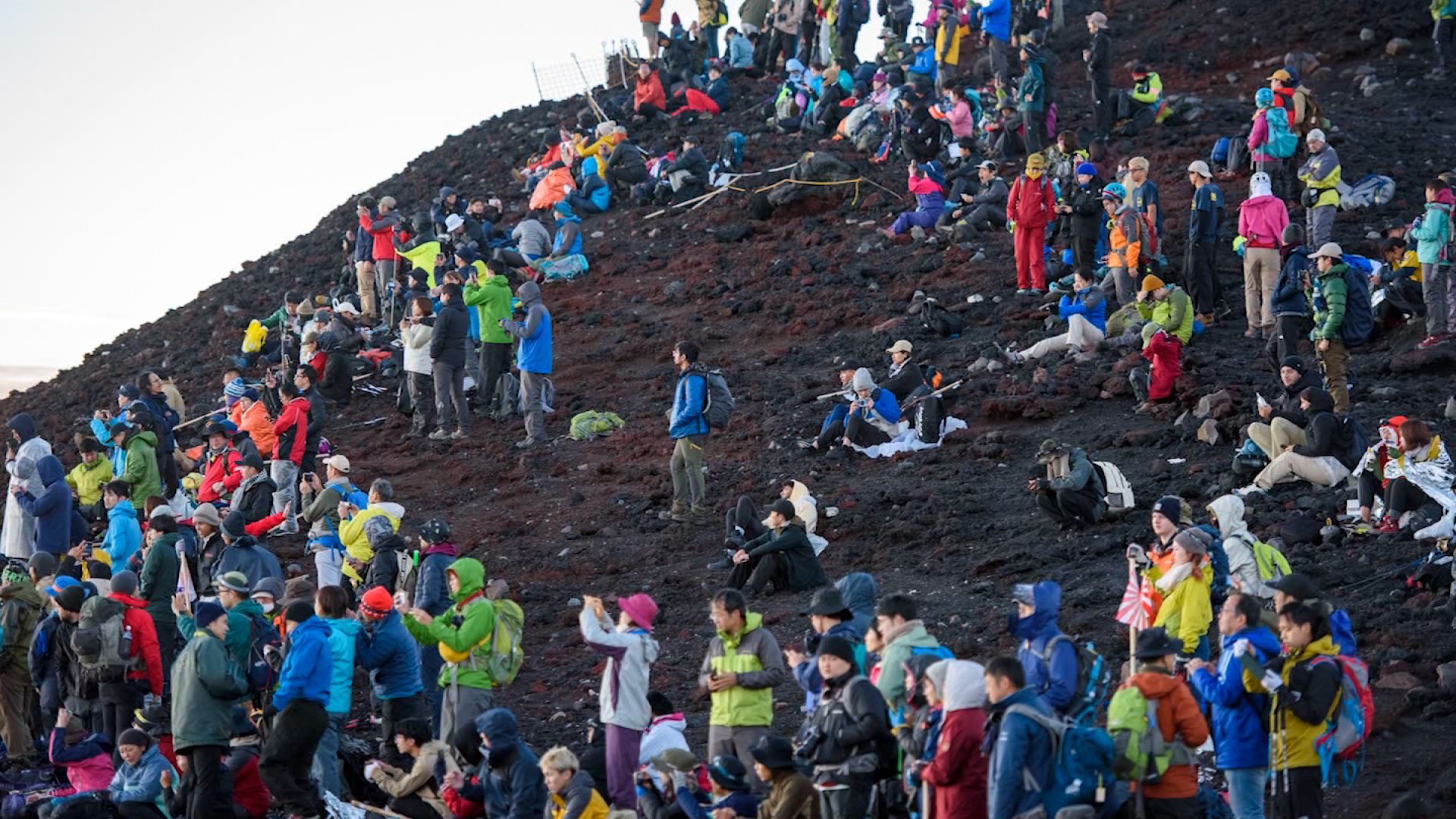World
As Thailand Gasps Through Another Haze Season, Researchers Hope A Fire-Charting App Can Help

Samoeng, Thailand — When the hazy season arrives, village chief Nanthawat Tiengtrongsakun and his tribesmen prepare the land for fires.
They chop bushes and trees on their little plots of land, then conduct controlled burns to clear their fields for planting – resulting in smoke clouds contributing to some of the world’s worst air. It’s a pleasant grey haze that reduces the mountains in this region of northern Thailand to a faint outline, makes the air feel solid, and makes breathing and swallowing difficult for some.
The Pakanyo, who have been practicing it for as long as they have lived in these hills around 90 minutes from Chiang Mai, a popular tourist destination, claim they are accused by city inhabitants of polluting the air and ruining forest land.
“We are the ethnic group that preserves the forest, but other people have the concern that we are destroying the forest,” stated Tiengtrongsakun. “My argument to them is that we’ve lived here for generations. If we are the ones who caused the devastation, the forest around us must be completely destroyed.”
The Pakanyo is just one example of several reasons demonstrating how deeply fire is embedded in local behaviors and why Thailand’s air pollution problem is so intractable.
During the haze season, which lasts from February to April, Chiang Mai is consistently ranked as one of the world’s most polluted cities. In March and April, the levels of fine particulate matter — dust, dirt, soot, and smoke that enter the lungs and even bloodstreams — are almost 20 times the World Health Organization’s recommended limit for exposure.
Thailand | AP News Image
As Thailand Gasps Through Another Haze Season, Researchers Hope A Fire-Charting App Can Help
The city is in the vanguard of Thailand’s fight against air pollution, not only because of its deadly air quality index readings but also because it has a strong civil society and a significant local government effort to address the issue. Prime Minister Srettha Thavisin has reinforced this endeavor, having visited Chiang Mai four times since entering office last summer. He has referred to Chiang Mai as a “model” that other Thai cities should follow, and he promised last autumn to push through clean air legislation to “ensure that access to clean air is a basic human right for all.”
Air pollution in northern Thailand has typically been blamed on farmers who grow maize and sell it to large agro-food corporations such as CP Foods for animal feed. There are alternative ways to deal with stubble, such as biochar, which includes burning in a low-oxygen atmosphere, resulting in lesser particle emissions. However, this needs a large amount of labor in highland locations. Even if most subsistence farmers had the necessary tools, tilling the stubble into the soil would be difficult due to the mountainous terrain.
CP announced in March that it has implemented a traceability system to prevent the purchase of maize grown on deforested or burned land. The same month, Srettha stated that he intends to ban the import of maize cultivated on land cleared by burning.
However, the problem extends beyond northern Thailand. According to researchers, corn planting has transferred primarily to neighboring Myanmar and Laos, where stubble burning is also practiced. Srettha has formed a working group with those countries to reduce the practice and urged Cambodia to join.
Chiang Mai University researchers investigated the origins of the city’s air pollution and found in April in the journal Atmospheric Environment that biomass burning accounted for more than 51% of the haze. According to the report, long-range pollution from other nations, most likely India, accounted for the second-largest percentage, almost 23%.
Fire is an important component of northern Thai culture, with local sayings predicting a period of development and rejuvenation. In everyday life, it is used to clean the forest floor to manage wildfires, to open space for an expensive fungus to develop that will bring in more money, and to remove the ground of loud leaves as part of hunting techniques.
Thailand | AP News Image
As Thailand Gasps Through Another Haze Season, Researchers Hope A Fire-Charting App Can Help
According to Olivier Evrard, a senior researcher at the French National Research Institute for Sustainable Development (IRD) headquartered in Thailand, fire is also frequently used as a protest method. A national issue emerged in 2018 when residents found that a judiciary branch had erected a dwelling and residential complex on protected forest property at the base of a sacred mountain outside Chiang Mai. They subsequently left the property due to the outrage, although fires are still set around the spot each year, most likely in protest.
There has been no shortage of policies aiming to control burning. Beginning in 2013, Thailand implemented a national zero-burning directive, with different provinces enforcing a blanket ban on burning at different times.
However, residents responded by burning before and after the zero-burn time, extending the haze season, according to Mary Mostafanezhad, a University of Hawaii professor researching air pollution in Chiang Mai. After determining that the zero-burning policy was ineffective, Chiang Mai province implemented a different policy: fires could be started as long as they were pre-approved.
The fires will be reported through FireD, an app Chiang Mai University professor Chakrit Chotamonsak created. The program utilizes weather and satellite data to anticipate if a fire on a specific day will increase pollution or if conditions will clear the smoke and pollutants.
The researchers estimate that up to half of the fires in the province are not registered, but they still see the app as a significant start. Even the decision to use FireD, a transliteration of “good fire” in Thai, in 2021 was significant, according to Chaya Vaddhanaphuti, an independent researcher who cooperated with the FireD team.
“This changes the perspective that fire was seen as a bad image, as savage,” he added, pointing out that many people in rural northern Thailand rely on fire.
Thailand | AP News Image
As Thailand Gasps Through Another Haze Season, Researchers Hope A Fire-Charting App Can Help
However, the villagers find it weird that they are being asked to fill out papers for permission to do something they already know how to do: set a planned burn in favorable weather to clear a section of land for the future year’s crops.
This year, Tiengtrongsakun, the Pakanyo chief in the village of Ban Mae Lan Kham, completed documentation for 100 households that needed to start a fire to clear fields. Only some people in the area speak Thai or know current government policy.
“If we hand them the document or registration form, they don’t know what to do with it,” he stated. “Often they just throw the papers away.”
According to researchers, officials must evaluate people’s living conditions and the specifics of where land is being burned and why. However, it is tough due to politics and economics. Many people who live in the hills around Chiang Mai belong to tribal tribes that the Thai government does not officially recognise. Others need help with obtaining a solid education and finding work. For now, burning remains the most efficient and cost-effective means for people to accomplish their tasks, whether farming, hunting, or clearing the forest floor.
“If burning is the easiest and most cost-efficient way to grow your crops, or to make a living, until that is not true, it’s going to continue to happen,” stated Mostafanezhad.
SOURCE – (AP)
World
Hurricane Beryl Roars Toward Jamaica After Killing At Least 6 People In The Southeast Caribbean

KINGSTON, Jamaica — Hurricane Beryl roared toward Jamaica on Wednesday, leaving islanders rushing to prepare after the devastating Category 4 storm killed at least six people and inflicted substantial damage in the southeast Caribbean.
People in Kingston boarded up their windows, fishermen withdrew their boats from the sea, and workers demolished roadside advertising boards to safeguard them from the fierce winds.
Pauline Lynch, a Kingston resident, said she had prepared for the storm by stockpiling food and water. With the wind already whipping up a light rain, Lynch stated, “I have no control over what is coming, so all I can do is pray that all Jamaicans are safe and that there are no deaths or losses.”
Beryl | AP News Image
Hurricane Beryl Roars Toward Jamaica After Killing At Least 6 People In The Southeast Caribbean
A hurricane warning was issued for Jamaica, Grand Cayman, Little Cayman, and Cayman Brac. Beryl was expected to decrease slightly over the next day or two but remain at or near major hurricane strength when it passes near or over Jamaica on Wednesday, near the Cayman Islands on Thursday, and into Mexico’s Yucatan Peninsula on Friday, according to the National Hurricane Center.
Jamaican Prime Minister Andrew Holness announced that the disaster zone declaration will stay in effect for seven days. He also declared an island-wide curfew from 6 a.m. to 6 p.m. on Wednesday.
Security personnel “will be fully mobilized to maintain public order and aid in disaster relief.” As soon as the cyclone passed, the security forces devised strategic preparations to prevent any potential threat of looting or other opportunistic crimes,” Holness stated.
An evacuation order was also issued for Jamaica villages vulnerable to flooding and landslides. Holness warned Jamaicans to avoid low-lying regions.
A hurricane watch was issued for Haiti’s southern and Yucatan east coast. Belize issued a tropical storm watch extending south from its Mexico border to Belize City.
Late Monday, Beryl became the Atlantic’s first Category 5 hurricane, reaching 165 mph (270 kph) on Tuesday before falling to a still-destructive Category 4. On Wednesday, the storm was approximately 75 miles (125 kilometers) southeast of Kingston. It had maximum sustained winds of 145 mph (230 kph) and was traveling west-northwest at 18 mph (30 kph).
Michael Brennan, Director of the National Hurricane Center in Miami, stated that Jamaica appears in Beryl’s direct path. He asked citizens to locate a secure shelter and stay there until Wednesday.
“We are most concerned about Jamaica, where we are expecting the core of a major hurricane to pass near or over the island,” according to a briefing he gave online.
Jamaica is expected to see a storm surge of 6-9 feet (1.8 to 2.7 meters) over normal tidal levels and severe rains.
On Wednesday, Mexico’s Caribbean coast prepared for Beryl. The government has issued a hurricane warning for the coast of the Yucatan Peninsula, from Puerto Costa Maya to Cancun.
The head of Mexico’s civil defense agency stated that Beryl is expected to launch a rare twin blow on the country. According to Laura Velázquez, the hurricane is forecast to land between late Thursday and early Friday on a rather unpopulated stretch of the Caribbean coast between Tulum and the inland town of Felipe Carrillo Puerto. Because the coast is primarily made up of lagoons and mangroves, there are few resorts or hotels south of Tulum.
As it traverses the Yucatan peninsula, the hurricane is anticipated to diminish to a tropical storm before reemerging as a storm in the Gulf of Mexico over the weekend. According to Velázquez, Beryl is likely to impact Mexican territory again, this time on the Gulf Coast states of Veracruz or Tamaulipas, close to the Texas border.
As Beryl plowed into the Caribbean Sea, rescue personnel in the southeastern islands spread out to assess the extent of the hurricane’s destruction to Carriacou, Grenada.
Officials confirmed three deaths in Grenada and Carriacou, as well as one in Saint Vincent and the Grenadines. Two further deaths were confirmed in northern Venezuela, while five people are missing, officials said. Beryl’s torrential downpour also affected approximately 25,000 people in the area.
Beryl | AP News Image
Hurricane Beryl Roars Toward Jamaica After Killing At Least 6 People In The Southeast Caribbean
The environment minister, Kerryne James, told The Associated Press that a tree fell on a house in Grenada, killing one. She claimed that Carriacou and Petit Martinique suffered the worst damage, with Carriacou losing hundreds of homes and businesses.
Grenada’s Prime Minister Dickon Mitchell stated on Tuesday that there is no power, roads are impassable, and the possibility of an increase in the death toll “remains a grim reality.”
Saint Vincent and the Grenadines Prime Minister Ralph Gonsalves has pledged to reconstruct the archipelago. He stated that 90% of homes on Union Island had been demolished and that “similar levels of devastation” were expected on the islands of Myreau and Canouan.
The most recent powerful hurricane to reach the southeast Caribbean was Hurricane Ivan, which killed scores of people in Grenada 20 years ago.
Grenada nicknamed the “spice isle,” is a major supplier of nutmeg. Mitchell stated that most of the spices are planted in the northern portion of the island, which Beryl most damaged.
SOURCE – (AP)
World
NBC To Use AI Version Of Announcer Al Michaels’ Voice For Olympics Recaps

NBC is bringing a version of legendary sportscaster Al Michaels back to the Olympics this summer, but with an unexpected twist: his voice will be powered by artificial intelligence.
On Wednesday, NBC said that it will utilize AI software to reproduce Michaels’ voice to offer daily Summer Games summaries to users of its Peacock streaming platform. This marks a significant milestone in the application of AI by a major media firm.

NBC | CTV Image
NBC To Use AI Version Of Announcer Al Michaels’ Voice For Olympics Recaps
The employment of an artificial intelligence voice for the Olympics comes at a time when technology has advanced dramatically, particularly in its ability to generate images, sounds, and text. This has sparked concerns in creative industries, such as journalism, regarding how artificial intelligence may—or should—be utilized.
A new tool, “Your Daily Olympic Recap on Peacock,” will allow subscribers to create 10-minute highlights packages incorporating event updates, athlete back stories, and other related content based on their preferences.
The company stated that the highlights could be packaged in approximately 7 million distinct ways, based on 5,000 hours of live coverage in Paris, thereby making AI (artificial intelligence, not the guy) a far more efficient way to give individualized summaries.
“When I was approached about this, I was skeptical but obviously curious,” Michaels stated in a press statement. “Then I saw a demonstration of what they had in mind. I replied, ‘I’m in.'”
An NBC representative told CNN that Michaels is being rewarded for his participation.
A veteran broadcaster, Michaels is now the play-by-play sportscaster for Thursday Night Football on Amazon Prime. He is well noted for his work on earlier Olympic Games broadcasts for NBC and ABC and for announcing the Miracle on Ice Game at the 1980 Winter Olympics in Lake Placid, New York.

NBC | Fox Image
NBC To Use AI Version Of Announcer Al Michaels’ Voice For Olympics Recaps
NBC stated that the AI system was trained using previous NBC broadcast audio from Michaels.
The business stated that a team of NBC Sports editors will evaluate all of the content, including audio and footage, to ensure that it is factually correct and that names are pronounced correctly.
Beginning July 27, the highlights tool will be available on Peacock in web browsers and iOS and iPad apps.
SOURCE – CNN
World
Japan’s Mount Fuji Implements Tourist Tax In Response To Overcrowding Concerns

Mount Fuji, a UNESCO World Heritage site and Japanese icon, has implemented new climbing limits in response to concerns about overpopulation.
Beginning July 1, climbers must pay 2,000 yen ($12.40) per person, and there is a daily limit of 4,000 climbers.

Mount Fuji | Japan Times
Japan’s Mount Fuji Implements Tourist Tax In Response To Overcrowding Concerns
“By strongly promoting comprehensive safety measures for climbing Mount Fuji, we will ensure that Mount Fuji, a world treasure, is passed down to future generations,” stated Koutaro Nagasaki, governor of Yamanashi Prefecture, when he announced the new laws earlier this year.
“To revitalize traditional mountain climbing from the foot of Mount Fuji, we shall get a thorough grasp of the Fuji-ko and Oshi cultures that fostered Mount Fuji worship. We hope to connect different civilizations through mountain climbing, which is steeped in religious cultural values.”
Fuji-ko is a religion unique to the mountains.
Human traffic bottlenecks, garbage-strewn hillsides, and poorly dressed hikers – some attempting the trip in sandals – are among the challenges afflicting the renowned Japanese destination.
In addition, new guides will oversee trail safety and notify climbers if they violate mountain etiquette, such as sleeping along the trail, making a fire, or wearing inappropriate attire.
According to prefectural data, five million people hiked Mount Fuji in 2019, up three million from 2012.
“Overtourism – and all the subsequent consequences like rubbish, rising CO2 emissions, and reckless hikers – is the biggest problem facing Mount Fuji,” Masatake Izumi, a Yamanashi prefectural government official, told CNN Travel last year.
In 2023, a volunteer named Tomoyo Takahashi told CNN that she planned to ask tourists to donate 1,000 yen ($6.20) to help maintain the mountain.
“Not everyone pays the 1,000 yen, which makes me sad. “There should be a much higher mandatory entrance fee so that only visitors who truly value Mount Fuji’s heritage come,” she stated.
Takahashi will finally achieve her wish.

Mount Fuji | CNN Image
Japan’s Mount Fuji Implements Tourist Tax In Response To Overcrowding Concerns
The new limitations, however, only apply to Yamanashi prefecture, which has the most popular hiking trails. Fuji is also located in Shizuoka prefecture, which has yet to have any tariffs or visiting restrictions. Governor Nagasaki told reporters that he and Shizuoka’s governor will meet at the end of the climbing season to swap notes.
Overtourism has become a major issue in Japan since the country reopened during the pandemic.
Locals in Kyoto’s historic Gion area have expressed concern over tourists flocking to photograph and sometimes harass the geisha who live and work there, giving them the term “geisha paparazzi.”
While the city has posted signs and boards urging visitors not to photograph geisha, several locals told CNN Travel that more is needed. The neighborhood council proposed issuing fines or penalties.
Hatsukaichi, in Hiroshima Prefecture, southwestern Japan, has also been hit. The little hamlet is notable for its orange “floating shrine” torii gate, part of a 1,400-year-old Shinto complex.
In October 2023, the town started charging 100 yen (62 cents) for visitors to the temple. The “tourist tax” funds the site’s maintenance and infrastructure.
SOURCE – (CNN)
-
News3 weeks ago
FIA Warns of Rising WhatsApp Hacks Targeting Women
-
Sports4 weeks ago
NHL To Broadcast Stanley Cup Final Games In American Sign Language, A 1st For A Major Sports League
-
Election News4 weeks ago
India Election Results: Narendra Modi Loses His Majority
-
World4 weeks ago
NASA Sends First Manned Starliner Spacecraft to International Space Station
-
Sports4 weeks ago
Edmonton Oilers Goaltender Stuart Skinner’s Play Is The Biggest Uncertainty In The Stanley Cup Final
-
Tech4 weeks ago
OpenAI’s ChatGPT Back Online After Major Outage





















